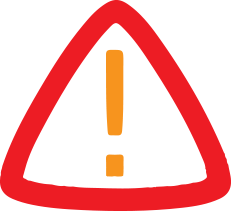
403
Sorry!!
Error! We're sorry, but the page you were looking for doesn't exist.
US dollar drops against major global currencies
(MENAFN) The US dollar has dropped more than 10% against major global currencies in the first half of 2025, marking its worst six-month performance since 1973, according to recent reports citing financial market data.
The ICE US Dollar Index, which tracks the dollar's value against a group of leading currencies, has fallen 10.8% so far this year. Traditionally seen as a safe-haven asset, the greenback’s sharp decline reflects growing investor unease with the direction of US economic policy.
The last time the dollar experienced a similar plunge was in the early 1970s, following the United States’ decision to end its gold standard. This time, analysts point to President Donald Trump’s aggressive trade measures and rising concerns over the federal deficit as key drivers behind the downturn.
Since retaking office in January, Trump has introduced sweeping new tariffs to support domestic manufacturing. On April 2, his administration launched what it called “Liberation Day” by applying a universal 10% import tax and increasing rates on goods from China, Mexico, Canada, and European Union nations.
While some of those tariffs have since been temporarily paused to allow for negotiations, the abrupt changes have sparked volatility in global markets. Trump has defended the measures, insisting they are necessary to bring jobs back to the US and to address longstanding trade imbalances.
However, financial experts warn that the policies are shaking investor confidence. Concerns about inflation, ballooning government debt, and the broader direction of US foreign and economic policy are all weighing on the dollar.
“Having a weak dollar or a strong dollar isn’t the issue,” said Steve Englander, global head of G10 foreign exchange research at Standard Chartered. “The issue is: What is it telling you about how the world sees your policies?”
The dollar’s rapid drop has also revived concerns about its future as the world’s dominant reserve currency. Some observers say the recent decline is signaling deeper uncertainty about America’s leadership in the global financial system.
Further adding to investor anxiety, the US Senate recently approved a Republican-supported tax and spending package expected to add $3.3 trillion to the federal deficit—intensifying worries over long-term fiscal stability.
The ICE US Dollar Index, which tracks the dollar's value against a group of leading currencies, has fallen 10.8% so far this year. Traditionally seen as a safe-haven asset, the greenback’s sharp decline reflects growing investor unease with the direction of US economic policy.
The last time the dollar experienced a similar plunge was in the early 1970s, following the United States’ decision to end its gold standard. This time, analysts point to President Donald Trump’s aggressive trade measures and rising concerns over the federal deficit as key drivers behind the downturn.
Since retaking office in January, Trump has introduced sweeping new tariffs to support domestic manufacturing. On April 2, his administration launched what it called “Liberation Day” by applying a universal 10% import tax and increasing rates on goods from China, Mexico, Canada, and European Union nations.
While some of those tariffs have since been temporarily paused to allow for negotiations, the abrupt changes have sparked volatility in global markets. Trump has defended the measures, insisting they are necessary to bring jobs back to the US and to address longstanding trade imbalances.
However, financial experts warn that the policies are shaking investor confidence. Concerns about inflation, ballooning government debt, and the broader direction of US foreign and economic policy are all weighing on the dollar.
“Having a weak dollar or a strong dollar isn’t the issue,” said Steve Englander, global head of G10 foreign exchange research at Standard Chartered. “The issue is: What is it telling you about how the world sees your policies?”
The dollar’s rapid drop has also revived concerns about its future as the world’s dominant reserve currency. Some observers say the recent decline is signaling deeper uncertainty about America’s leadership in the global financial system.
Further adding to investor anxiety, the US Senate recently approved a Republican-supported tax and spending package expected to add $3.3 trillion to the federal deficit—intensifying worries over long-term fiscal stability.

Legal Disclaimer:
MENAFN provides the
information “as is” without warranty of any kind. We do not accept
any responsibility or liability for the accuracy, content, images,
videos, licenses, completeness, legality, or reliability of the information
contained in this article. If you have any complaints or copyright
issues related to this article, kindly contact the provider above.
Most popular stories
Market Research

- Thinkmarkets Adds Synthetic Indices To Its Product Offering
- T-REX Launches Intelligence Layer To Fix Web3's Value Distribution Problem
- BTCC Exchange Maintains 143% Total Reserve Ratio In September 2025 Demonstrating Continued Financial Strength
- Ethereum-Based Defi Crypto Mutuum Finance (MUTM) Raises Over $16 Million With More Than 720M Tokens Sold
- Superiorstar Prosperity Group Russell Hawthorne Highlights New Machine Learning Risk Framework
- R0AR Chain Announces $100,000 Community Rewards For Creators, Yappers, And Brand Evangelists



















Comments
No comment